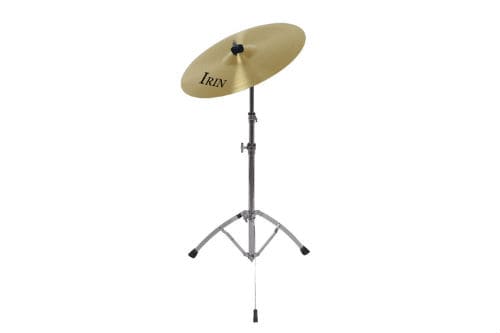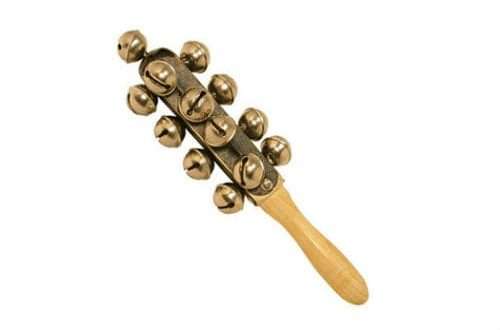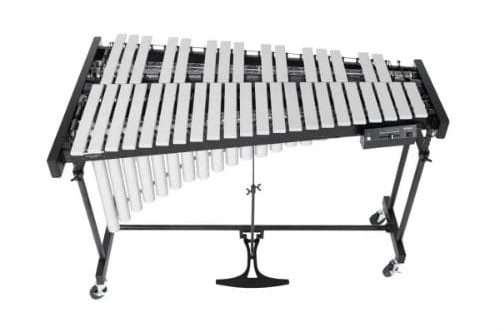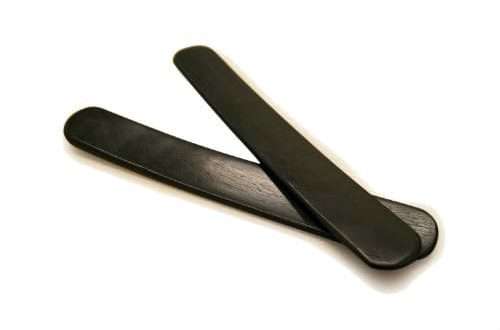
Cymbals: instrument description, structure, history, types, use
Contents
Cymbals are a musical construction that is actively involved in the performance of modern pop works, in fact, they are one of the oldest inventions on the planet. Prototypes were found on the territory of the present eastern countries (Turkey, India, Greece, China, Armenia), the oldest model is dated to the XNUMXth century BC. AD
Basics
The musical instrument belongs to the percussion category. Production material – steel. For the purity of the sound, special alloys are used – they are cast, then forged. Today there are 4 alloys in use:
- bell bronze (tin + copper in a ratio of 1:4);
- malleable bronze (tin + copper, and the percentage of tin in the total alloy is 8%);
- brass (zinc + copper, the share of zinc is 38%);
- nickel silver (copper + nickel, nickel content – 12%).

The sound of bronze cymbals is sonorous, brass ones are dull, less bright. The last category (from nickel silver) is a find of masters of the 4th century. These are not all the options for the alloys used, the rest are simply not widely used, professionals prefer to use only XNUMX of the above compositions.
Cymbals are an instrument with an indefinite pitch. If desired, any sounds can be extracted from them, their height depends on the skill of the musician, the efforts made, and the material of manufacture.
Modern models are in the form of convex discs. They are found in orchestras, various musical groups, ensembles. Sound extraction occurs by hitting the surface of the disks with special devices (sticks, mallets), paired cymbals hit each other.
The structure of the plates
This percussion musical instrument has a domed shape. The upper convex part of the dome is equipped with a hole – thanks to which the plate is attached to the rack. Immediately at the base of the dome, the so-called “ride-zone” begins. The ride zone is the main body of the cymbal that occupies the largest surface area.
The third zone, close to the edges of the disc, is responsible for sound production – the crash zone. The crash zone is thinner than the body of the cymbal, and hitting it creates the loudest sounds. On the dome, the ride zone is hit less often: the first gives a sound similar to a bell, the second gives a ping with overtones.

The sound of cymbals depends on three parameters related to the structure:
- Diameter. The larger the size, the stronger the sound produced. At big concerts, small cymbals will be lost, large ones will be heard in full.
- Dome size. The larger the dome, the more overtones, the louder the Play.
- Thickness. A wide, loud sound is made by heavy, thick models.
The history of cymbals
Analogues of plates appeared in the Bronze Age on the territory of ancient China, Japan, Indonesia. The design looked like a bell – a conical shape, below – a bend in the form of a ring. The sound was extracted by striking one instrument against another.
After the XIII century AD. Chinese instrument ended up in the Ottoman Empire. The Turks changed the look, actually bringing the plates to its modern interpretation. The instrument was used mainly in military music.
Europe was not impressed by the eastern curiosity. Professional composers and musicians included cymbals in the orchestra when it was necessary to create an atmosphere of the barbarian east, to convey Turkish flavor. Only a few great masters of the XNUMXth-XNUMXth centuries wrote parts that suggested the use of this instrument – Haydn, Gluck, Berlioz.
XX-XXI centuries were the heyday for plates. They are full members of orchestras and other musical groups. New models and methods of play are emerging.

Types
There are several types of instrument, differing in size, sound, appearance.
Paired cymbals
Orchestral cymbals are represented by several types, one of them is hi-hat (Hi-hat). Two cymbals mounted on the same rack, one opposite the other. The stand is equipped with a foot mechanism: acting on the pedal, the musician combines paired instruments, extracting sound. A popular hi-hat diameter is 13-14 inches.
The idea belongs to jazz performers: the design adorned the drum kit so that the player could alternately control the drums and extract sound from the cymbals.

Hanging cymbals
This category includes several subspecies:
- Crash. The disk is hung on a rack. There may be a couple of crash models in an orchestra, and when one hits the other, a powerful, wide-band sound is extracted. If there is only one design, the musician plays using a stick. The instrument gives accents to a piece of music, does not perform solo parts. Distinctive features – a thin edge, a small thickness of the dome, the diameter of classic professional models – 16-21 inches.
- Ride. The extracted sound is short, but powerful, bright. The purpose of the tool is to place accents. A distinctive feature is the thickened edge. The common diameter is 20 inches. A modification of the model is sizzle – the body of such an instrument is equipped with chains, rivets to enrich the noise emitted.
- Splash. Distinctive features – small size, thin disc body. The thickness of the edges is approximately equal to the thickness of the dome. The diameter of the model is 12 inches, the sound is low, short, high.
- China. Feature – domed shape, “dirty” sound, reminiscent of the sounds of a gong. The Chinese group also includes subspecies of swish and pang. They are similar in appearance, have a similar sound.
finger cymbals
They are called so because of their small size – the average diameter is only 2 inches. They are attached to the fingers (medium and large) with the help of special devices, for which they were secretly called hand plates. Originally used by belly dancers. Homeland is India, Arab countries. Today they are rarely used – in ethnic groups, among rock musicians.





